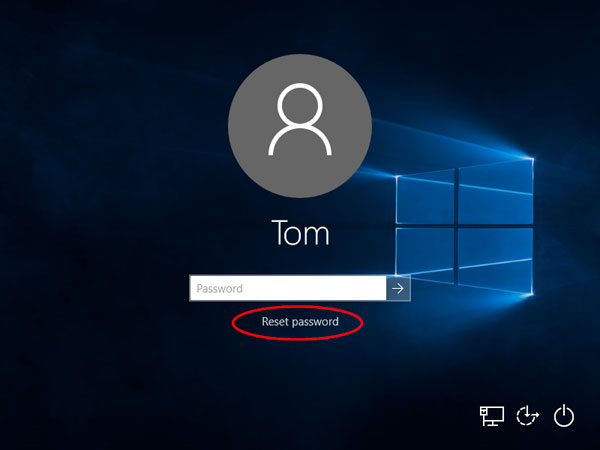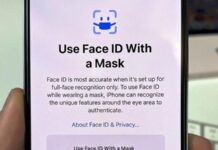If you can’t remember your Windows password and can’t log in, here’s what to do.
If your PC or laptop doesn’t have a fingerprint sensor or camera with Windows Hello support, you’re probably still using a password or PIN to log in.
Now that Microsoft has forced many users to switch to using a Microsoft login rather than a local one, it’s easier to lose track of the latest password as you probably change it more often.
Either way, all is not lost. There are a few things you can try before you consider reinstalling Windows altogether.
The purpose of this tutorial is to help you gain access to a personal PC that you’ve been locked out of. We can’t, of course, condone the use of these tips to gain access to someone else’s device.
First, though, just double-check that you haven’t accidentally pressed the Caps Lock key. You may be typing the right password, but upper-case and lower-case letters will be swapped over. Since passwords are case-sensitive, it won’t be recognised. Similarly, on a laptop, ensure you don’t have Num Lock enabled, which could mean you’re typing numbers instead of letters.
Reset your Windows 10 password
Microsoft account
If you are using a Microsoft account, you’re in luck. A forgotten password is easily resolved by going to the Recover your account page and following the instructions to reset your password.
Once that’s done, you can use the new password that you just entered to log into Windows.
Local account
There may still be hope even if you’re using a local account on your laptop or PC.
Your computer needs to be running Windows 10 version 1803 or later. That’s fairly old, so there’s a good chance it will have this version (or newer).
However, you’ll have needed to set up security questions to be asked in the event you forgot your password.
So, if you did add security questions, you should see a Reset password link on the Windows 10 sign-in screen.
If you use a PIN instead of a password, you can choose to sign in with a password. If you also forgot your password, you’ll need to reset that first.
To do it, select Reset password on the login screen (once you’ve chosen password as the way to log in).
You should now see the security questions you set up when you set up your local Windows 10 account.
Answer them correctly, and you’ll be able to enter a new password.
Now you can sign into Windows and then choose a new PIN code (if you also forgot that) by going to Start > Settings > Accounts > Sign-in options > Windows Hello PIN > Change.
If you don’t see any security questions, you are out of luck. You either didn’t set them up or your computer is running an earlier version of Windows 10. It’s not possible to reset a forgotten password and the only option then open to you is to completely reset Windows. This will erase your documents, photos, music, programs, apps and settings. Windows 10 will go back to how it was when you first bought the laptop or PC.
This is probably very bad news if you don’t have a backup of important files, so it’s worth trying every password (and variations of it) that you’ve ever used before you take this nuclear approach.
If you do find yourself in that unenviable position, here’s how to reset Windows:
- Hold down the Shift key while you click on the Power button in the bottom-right corner of the Windows login screen and select Restart.
- When you see the Choose an option screen, click on Troubleshoot, then Reset this PC.
- On the next screen pick ‘Remove everything’ as other types of reset won’t get rid of the password which you can’t remember.
We have various other password-related tutorials for Windows 10. Here’s how to set a temporary one, change another user’s password or remove it altogether.
For those using older versions of Windows, the following tips may help.
Use the hidden administrator account (Windows 7 and older)
Windows 7 (and some previous versions) have an administrator account which isn’t visible in normal use.
Note: this method may not work if the account has been disabled, which it is by default in some Windows 7 installations.
- Start up (or re-start) your computer and press F8 repeatedly
- From the menu that appears, choose Safe Mode
- Key in “Administrator” in Username (note the capital A), and leave the password blank.
- You should be logged in to safe mode.
- Go to Control Panel, then User Accounts
- Select the account you want to reset the password
- Change the password
Once that’s done, here’s how to get Windows to automatically sign in and not ask for a password.
Use the Windows boot disc or USB drive
If you can find a Windows DVD or bootable USB drive with Windows on it, you might be able to use the command prompt to enable a disabled administrator account.
Alternatively, you can also try to force Windows to launch startup recovery by turning on your computer and when you see the Windows loading screen, hold down the power button for four seconds to turn it off.
Next time you start it up, Windows should offer a boot menu with an option: Launch Startup Repair.
Choose this and let Windows search for problems.
Once it finishes, look for a drop-down menu called View problem details. Scroll down and click the last link.
This opens a text file. We’re not interested in this, as we’re using it to access File Explorer.
At the top of the window, click File > Open. Navigate to your Windows drive (the drive letters may have been changed) and then find the Windows\System32 folder.
Scroll down and find the file sethc. You might need to change the ‘Files of type’ to all files rather than just text files.
Right-click on sethc and choose Rename. Change the name by adding a number or letter. It doesn’t matter which.
Click off the filename to save your changes.
Now scroll down to cmd (the command prompt) and right-click on it. Choose Copy, then right-click on some white space and choose Paste.
This will create a copy, but rename it sethc just as you did with the actual sethc file before.
Close all the windows, then click on Finish. Your computer will turn off.
Boot it up again, and wait for the login prompt to appear.
Press the Shift key five times. This will launch the command prompt.
Type:
net user
This will list all the user accounts. Let’s say your user account is called Jim
Now type:
net user Jim *
Now you can enter a new password for that account. If you don’t want one, just press Enter to create a blank password. You’ll be asked to type the password again to verify it.
Close the Command Prompt window and you can now log into the user account with the new password.
Use a password reset utility
If all of this fails you can download a utility which claims to break or bypass the Windows password. Again, we can’t condone the use of these for anything other than rescuing your own files in your own computer.
You’ll find these easily if you search online for ‘Windows password reset tool’, and one worth trying is simply called NTpasswd.













![Hotstar Premium Cookies 2019 [*100% Working & Daily Updated*] Hotstar Premium Cookies 2019 [*100% Working & Daily Updated*]](https://tahav.com/wp-content/uploads/2019/11/Hotstar-Premium-Cookies-Free-100x70.jpg)



